Tulsa, OK Pollen and Allergy Report for Summer 2023
Pollen Allergy Trends in Tulsa, OK
When is pollen lowest in Tulsa, OK?

February
Lowest month total PPM
Avg. PPM
When is pollen highest in Tulsa, OK?

March
Highest month total PPM
Avg. PPM
How does pollen in Tulsa, OK compare to Oklahoma?
Tulsa has a higher average PPM than the state of Oklahoma.
Tulsa yearly avg PPM:
Oklahoma yearly avg PPM:
How does pollen in Tulsa, OK compare to the USA?
Tulsa has a higher average PPM than the USA.
Tulsa yearly avg PPM:
USA yearly avg PPM:
Is pollen worse this year in Tulsa, OK?
Spring 2023 was worse than spring 2022.
Spring 2023 PPM:
Spring 2022 PPM:
Average PPM in Tulsa, OK
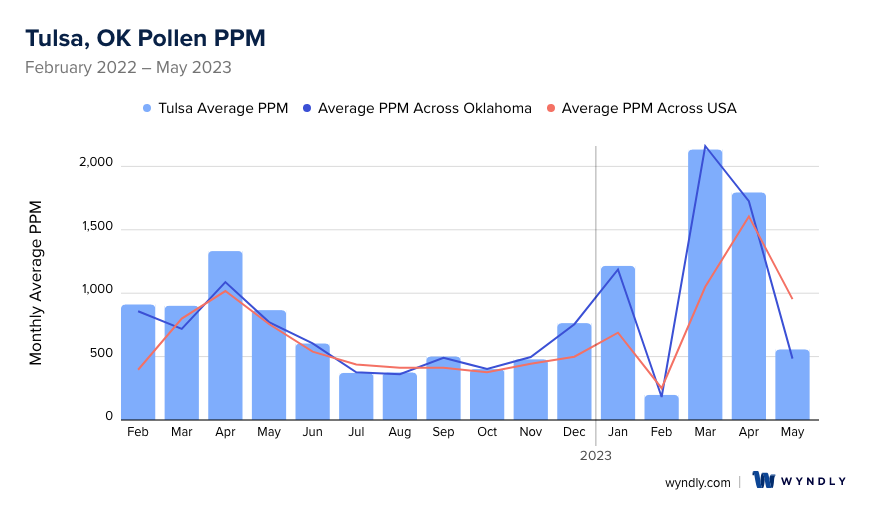
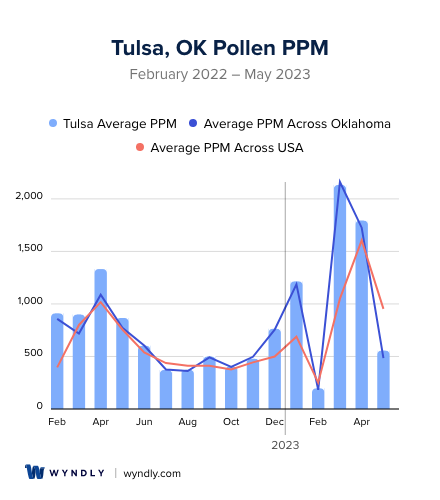
Tulsa, OK Pollen and Allergy Breakdown by Month
Grass
When is grass pollen highest in Tulsa, OK?
February has the highest grass pollen in Tulsa, OK with an average PPM of
When is grass pollen lowest in Tulsa, OK?
December has the lowest grass pollen in Tulsa, OK with an average PPM of
Tree
When is tree pollen highest in Tulsa, OK?
March has the highest tree pollen in Tulsa, OK with an average PPM of
When is tree pollen lowest in Tulsa, OK?
July has the lowest tree pollen in Tulsa, OK with an average PPM of
Weed
When is weed pollen highest in Tulsa, OK?
April has the highest weed pollen in Tulsa, OK with an average PPM of
When is weed pollen lowest in Tulsa, OK?
February has the lowest weed pollen in Tulsa, OK with an average PPM of
Tulsa, OK Pollen Monthly Breakdown by Pollen Type
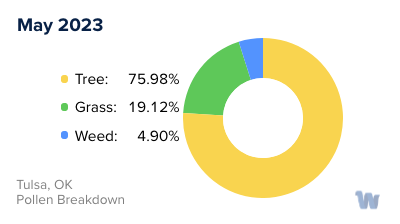
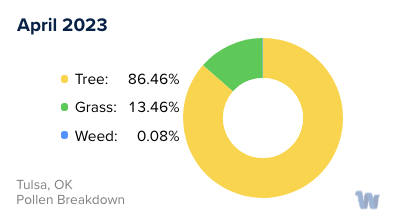
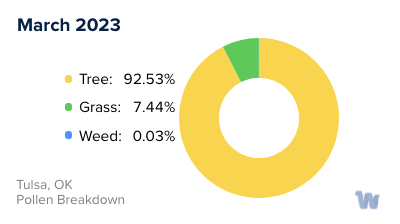
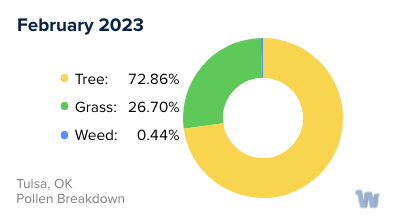
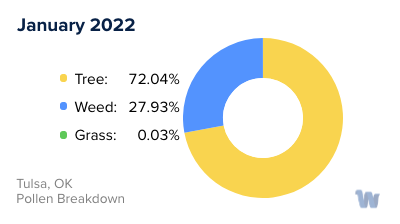
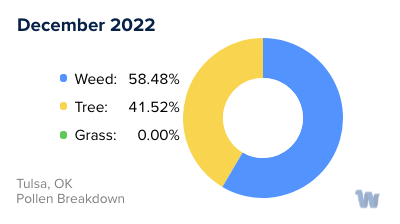
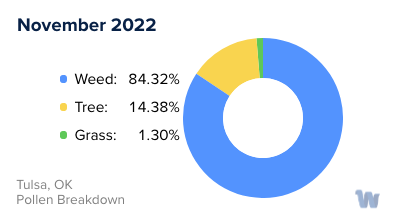
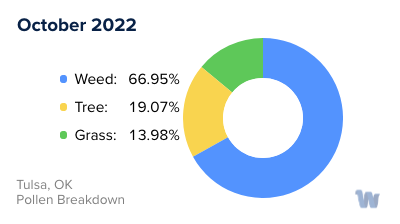
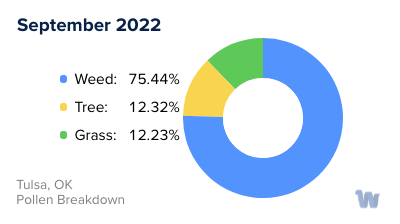
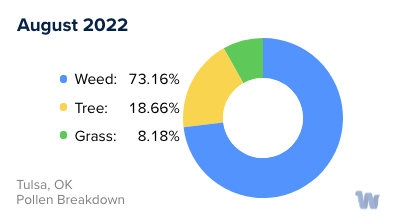
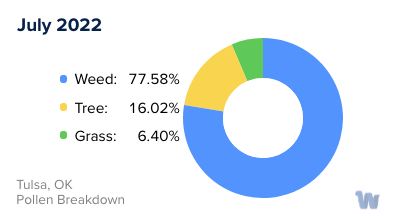
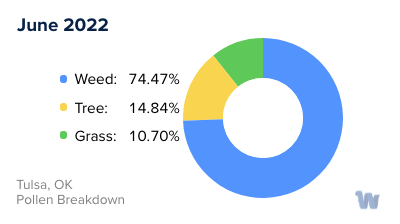
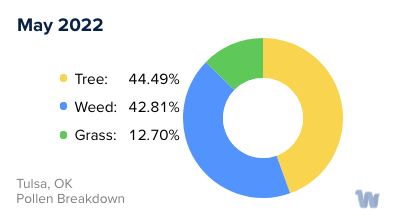
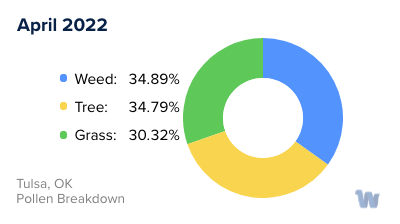
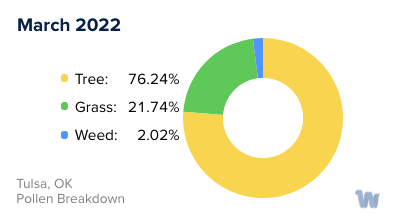
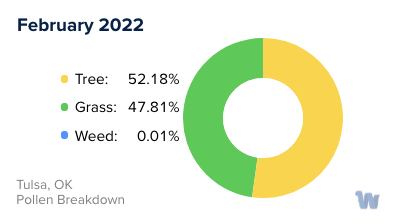
Pollen and Hay Fever in Tulsa, OK
In the picturesque city of Tulsa, Oklahoma, the beauty of nature is undeniable. However, with the blooming flowers and lush greenery, comes the ubiquitous presence of pollen. Pollen allergies, commonly referred to as hay fever, are a prevalent concern for the residents of Tulsa.
Pollen is a fine powder produced by trees, flowers, grasses, and weeds. It is carried by the wind or insects and plays a crucial role in the fertilization of plants. However, for many people, exposure to certain types of pollen can trigger an allergic reaction.
In Tulsa, tree pollen is predominantly present in the spring. Oak, cedar, and pine trees are among the most common culprits. Their pollen levels peak between March and May. When the trees have finished their pollination process, grasses take the stage. Bermuda, Timothy, and Kentucky bluegrass are prevalent in Tulsa and release their pollen from late spring to early summer.
As summer turns to fall, weed pollen becomes the star of the show. Ragweed is particularly notorious and is a significant trigger for hay fever symptoms among the population of Tulsa. Moreover, the city’s temperate climate can sometimes cause plants like ragweed to pollinate for an extended period, thus prolonging the allergy season.
Being informed about the types of pollen and the seasons in which they are prevalent is essential for the residents of Tulsa. Awareness about pollen patterns allows people to anticipate and prepare for the pollen seasons, and to understand the cause behind the sneezes and sniffles that accompany the changing seasons in this beautiful city.


